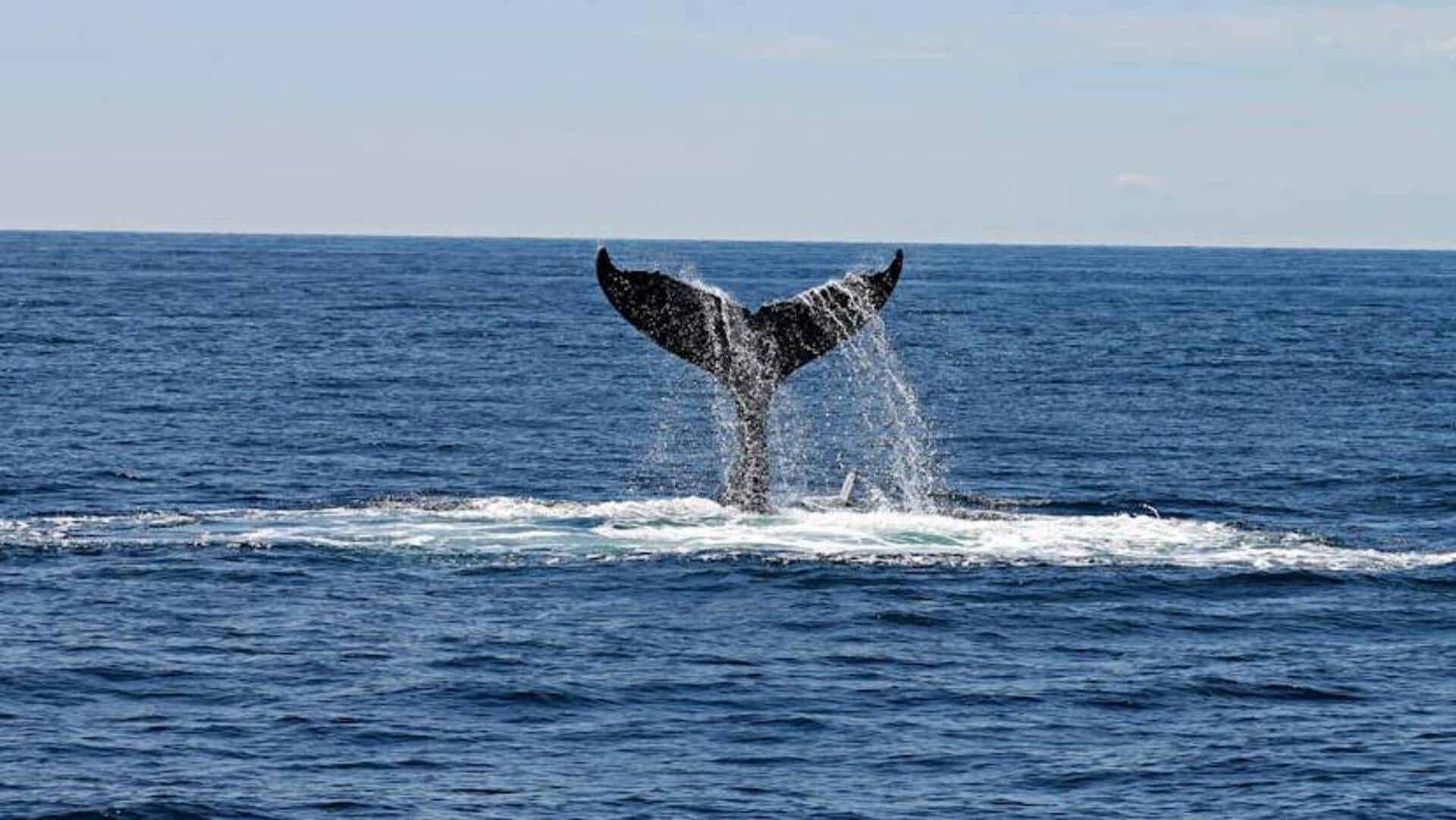
Patagonia's ultimate whale-watching guide
What's the story
Patagonia, a stunningly remote region nestled between Argentina and Chile, is renowned for its breathtaking landscapes and unparalleled wildlife experiences. Among the most captivating activities it offers, whale watching is a standout. Each year, these majestic creatures migrate to the waters of Patagonia, presenting a unique opportunity for visitors to observe them up close in their natural habitat.
Gear up
Essential gear for whale watching
To fully enjoy the whale-watching experience in Patagonia, you'll need binoculars with at least eight times magnification. This will allow you to see whales from a distance without disturbing them. A waterproof and windproof jacket is also essential, as weather can change rapidly. Don't forget comfortable waterproof boots for stability on slippery decks or shores.
Timing is everything
Choosing the right time to visit
For the best whale watching in Patagonia, timing is key. The months from June to December are ideal for observing Southern Right Whales, which are most commonly seen. For those keen on spotting Blue whales, the period from February to April is recommended. Aligning your visit with these specific months significantly enhances your chances of sightings, ensuring a rewarding and unforgettable whale watching experience.
Snap away
Capturing the moment
To capture the awe-inspiring moments of a whale breaching or tail flapping, a high-quality camera equipped with a zoom lens is essential. It's crucial to ensure your camera is waterproof or encased in protective gear to guard against splashes. Additionally, carrying extra batteries and memory cards is advisable, as the cold can deplete battery life more quickly than expected.
Observe responsibly
Respectful observation practices
Witnessing these magnificent animals in their natural habitat is thrilling, yet observing them ethically is vital. Always maintain a safe distance, as recommended by your guide or tour operator—usually at least 100 meters away from any whale. This practice helps avoid causing them stress or altering their natural behaviors, ensuring a respectful and ethical wildlife observation experience.